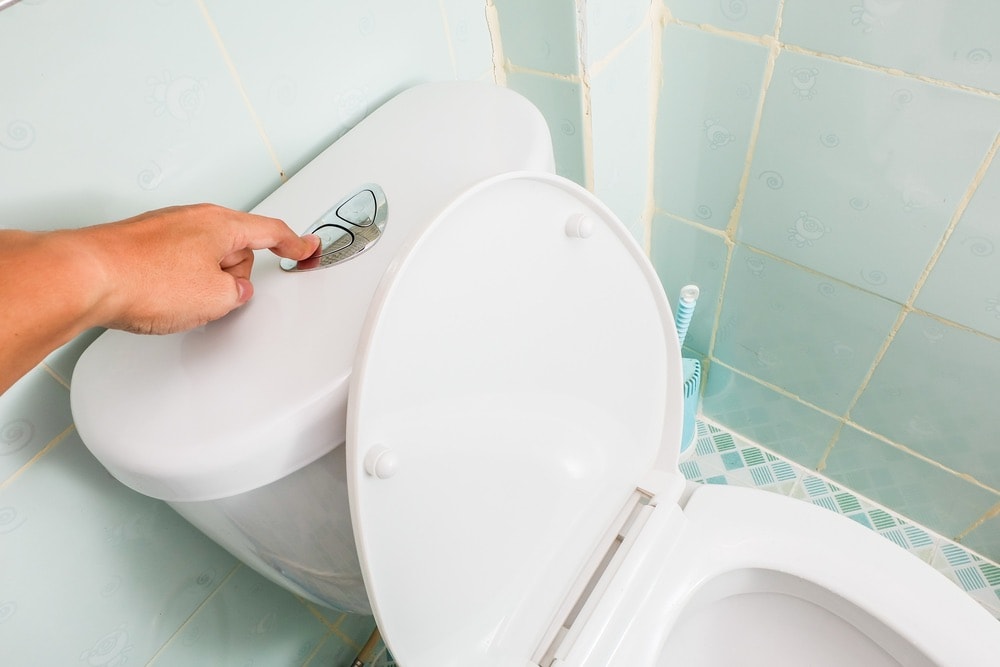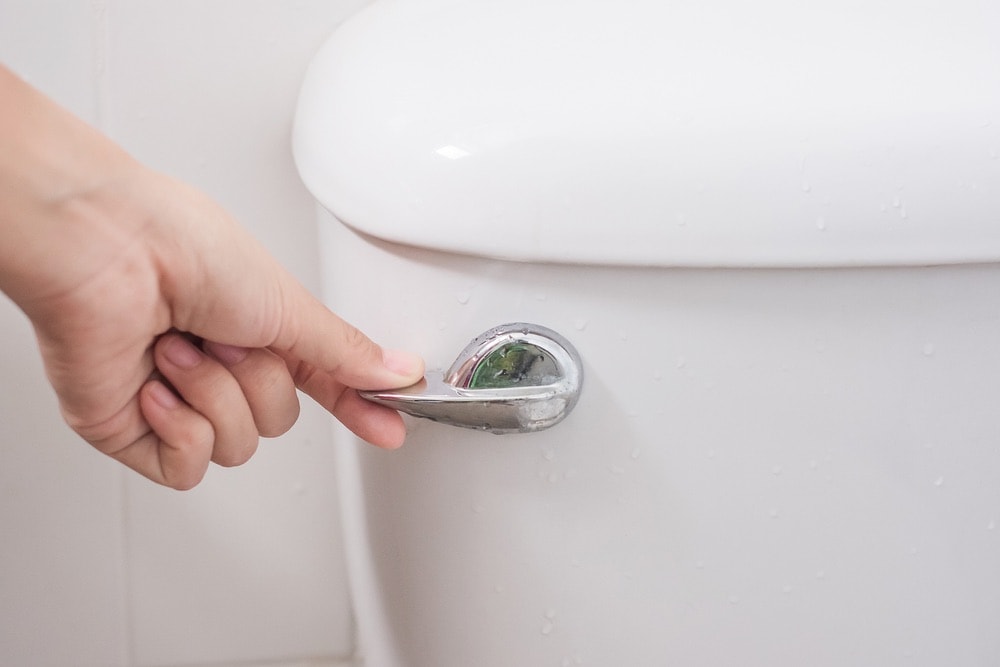Dual Flush vs Single Flush Toilets: Which One Should You Choose?
-

- Last updated:

When looking to install a new toilet in your house or business premises, take the time to consider the type of toilet that will be ideal for your needs. For the longest time, all toilets were essentially the same, with the only difference being aesthetics.
Today, however, toilets come in two primary types: single flush and dual flush. Single flush toilets have been around since toilets were invented. The dual flush only came around recently.
So, which one is better? This article will help you find out.
What Is a Single Flush Toilet?
As mentioned, single flush toilets are, by far, the most common types of toilets. They are a staple in older homes, as well as most buildings, even modern ones.
These toilets get their name from their mechanism of action, in that just one pull of a handle or press of a button empties the cistern of all the water inside it to flush away the waste.

What Is a Dual Flush Toilet?
Dual flush toilets, on the other hand, allow you to choose between using half the water in the cistern and all the water in the reservoir.
Single Flush vs. Dual Flush: The Comparison
Each toilet type has unique advantages and drawbacks, depending on where it is being used. Nonetheless, one has to have an edge over the other. To make it a fair fight, let’s compare the two.
Water Usage
According to Home Water Works, toilet-flushing accounts for the highest use of water in the average home, with the average individual flushing about five times a day.
Single flush toilets are the undeniable culprits for this “water wastage.” This is because traditional single flush toilets could use as much as 3.6 gallons (13.6 liters) per flush.
This raised so much concern that the government enacted regulations stating that single flush toilets should not use more than 1.6 gallons (6 liters) per flush. As a result, the new generation single flush toilets adhere to those regulations. There are even high-efficiency single flush toilets that utilize less than 1.28 gallons per flush.
Double flush toilets, on the other hand, also adhere to the regulations and use 1.6 gallons per flush. Their advantage, however, is that they allow you to do a half-flush, thereby using only 0.8 gallons. This is more efficient, as you can use the full flush for solid waste, while utilizing the half flush for liquid waste.
A typical dual flush toilet has two buttons on its lid. Pressing a single button results in a half flush, while pressing both simultaneously results in a full flush.
Therefore, when you compare both toilets based on water usage, it is clear that the dual flush toilet is the superior toilet. However, in public restrooms and other busy bathrooms, single flush toilets are more suitable; we shall explain this point later. Dual flush toilets are more suited for home use.
Flushing System
Although dual flush toilets can help you save water, some individuals report having trouble with its flushing system. As mentioned, the buttons of a typical dual flush toilet are on top of the cistern and can require a significant amount of force to push down.
This poses a problem to certain groups of people, such as the disabled, those with finger arthritis, or the elderly.
Flushing a single flush toilet, on the other hand, is not as challenging, as you can use different parts of your body to manipulate the trip lever.
As such, when it comes to the flushing method, a single flush toilet’s system is more convenient.
Maintenance
The ease of maintenance is something that you will also need to consider, as you want to easily find spare parts to your toilet in case it gets damaged.
Due to their novel nature, dual flush toilets can pose a maintenance issue, as their parts can be hard to find.
Single flush toilets, on the other hand, have been around for ages, with their design remaining largely unchanged. This means that finding their spare parts is quite easy.
The implication, therefore, is that single flush toilets are easier to maintain than dual flush toilets.
Eco-friendliness
As climate change and its effects continue to be an issue of concern, we must practice conservation measures to reduce wastage of our dwindling natural resources. Water is one of those resources. Even though our planet has an abundance of water, only 0.3% of that water is usable by humans.
The other 99.7% is in the seas and oceans, icecaps, soils, and in the atmosphere. Moreover, much of that 0.3% remains unattainable. If you are wondering why we do not utilize salty water from the oceans, then it is because salty water corrodes plumbing. Therefore, the only option is to desalinate it, which is an extremely energy-intensive process. Creating that kind of energy, on the other hand, involves depleting the earth’s dwindling resources even further.
This is why water conservation is key. In that regard, single flush toilets are wasteful.
Aesthetics
This is purely subjective. Some people prefer the classic look of single flush toilets, while others prefer the contemporary look of dual flush toilets.
Costs
Ultimately, you will find that the average single flush toilet to be cheaper than the average dual flush toilet. This is why single flush toilets are typically used in public restrooms.
Nonetheless, if you are looking for a toilet for your home, you must think in the long term. Purchasing and installing a dual flush toilet might be more expensive, but you will start making significant savings from your water bill in no time at all.
Then again, dual flush toilets can be costlier to maintain.
Pros and Cons of Single Flush Toilets
Here is why you should or should not get a single flush toilet:
- Cheaper to buy and maintain
- Easier to use
- Contributes to water wastage
Pros and Cons of Dual Flush Toilets
The following are the benefits and drawbacks of dual flush toilets:
- Eco-friendly
- Long-term cost savings
- Can be costly to purchase and maintain
 Verdict
Verdict
When it comes down to it, the dual flush toilet is the superior toilet due to its eco-friendly nature. However, specific groups of people will find single flush toilets to be more convenient. Therefore, if you are going to get a single flush toilet, you may as well get a good one, such as the high-efficiency American Standard 2403128.020, which is a single flush toilet designed to reduce wastage.
At only 1 gallon per flush, Toto Neorest 700H is a dual flush toilet that takes water conservation to the next level, which is why we love it.
Which type of toilet do you think suits you best? Let us know!
Featured Image Credit: Kitti.s, Shutterstock
Contents

